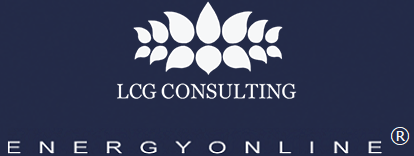|
News
|
LCG, October 28, 2025--NextEra Energy and Google yesterday announced two agreements that will help meet growing electricity demand from artificial intelligence (AI) with clean, reliable, 24/7 nuclear power and strengthen the nation's nuclear leadership. First, Google signed a new, 25-year agreement for power generated at the Duane Arnold Energy Center, Iowa's only nuclear power facility. The 601-MW boiling water reactor unit was shut down in 2020 and is expected to commence operations by the first quarter of 2029, pending regulatory approvals to restart the plant.
Read more
|
|
LCG, October 23, 2025--Google announced today a first-of-its kind agreement to support a natural gas-fired power plant with carbon capture and storage (CCS). The 400-MW Broadwing Energy power project, located in Decatur, Illinois, will capture and permanently store its carbon dioxide (CO2) emissions. By agreeing to buy most of the power it generates, Google is helping get this new, baseload power source built and connected to the regional grid that supports our data centers.
Read more
|
|
|
Industry News
Cheaper, Plastic Solar Cells to Come
LCG, April 1, 2002-- Semiconducting plastics may make solar cells easier and much cheaper to make.Researchers from the University of California, Berkeley and Lawrence Berkeley National Laboratory have developed a nano-scale combination of conducting rods and liquefied semiconducting plastic. The neophyte cell produces a tiny bit of electricity and will take a decade or so of development before being applied commercially. However, the use of specially designed and carefully manipulated molecules have opened up the range of possibilities for solar cells, which up to now have been most successfully made from silicon. The Berkeley team, headed by Paul Alivisatos, receives federal funding from the National Renewable Energy Laboratory, less than $300,000 for three years. According to the Sacramento Bee, Alivisatos says that the group's photovoltaic process could be used in small applications within 2 to 5 years. Silicon and other crystalline semiconductors are costly to produce because of their high melting temperatures and the need for extremely "clean" production conditions. Recently discovered plastic semiconductors are much cheaper to produce.While today solar energy involves the roundabout process of heating water into steam to power electricity-producing turbines, solar cells sidestep the turbine and convert the sun's rays directly into electricity. U.S. and Japanese researchers, including University of California, Santa Barbara professor Alan Heeger, shared the Nobel prize in 2000 for plastic conductivity.
|
|
|
|
UPLAN-NPM
The Locational Marginal Price Model (LMP) Network Power Model
|
|
|
UPLAN-ACE
Day Ahead and Real Time Market Simulation
|
|
|
UPLAN-G
The Gas Procurement and Competitive Analysis System
|
|
|
PLATO
Database of Plants, Loads, Assets, Transmission...
|
|
|
|
|
